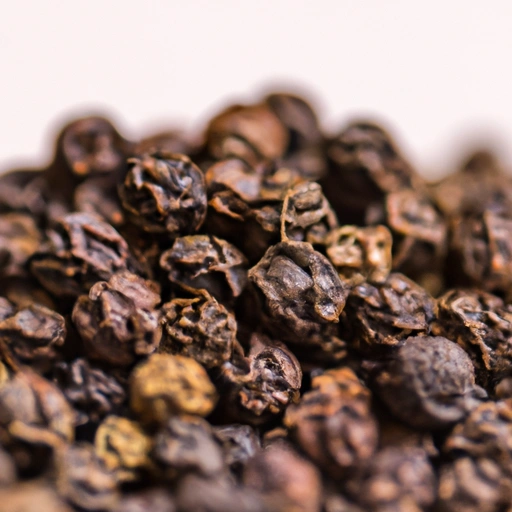Black Peppercorn
Description

Black peppercorn, the dried fruit of the Piper nigrum plant, is one of the most widely used spices in the world. Originating from the Malabar Coast of India, these small, potent spheres have traversed the globe to earn their place in culinary traditions across a myriad of cultures.
Common uses
Black peppercorns are versatile and can be used whole, crushed, or ground into a fine powder. They add a warm, piquant flavor to dishes and are commonly used as a table condiment, paired with salt.
Nutritional value
Calories
Black peppercorn contains about 255 calories per 100 grams (3.5 oz).
Protein
Provides approximately 10 grams of protein per 100 grams (3.5 oz).
Fat
Contains a minimal amount of fat, with around 3 grams per 100 grams (3.5 oz).
Carbohydrates
It comprises about 64 grams of carbohydrates per 100 grams (3.5 oz).
Vitamins
Rich in vitamins like Vitamin K, Vitamin C, and some B-complex vitamins.
Minerals
Abundant in minerals such as manganese, iron, potassium, and calcium.
Health benefits
Black peppercorn may aid digestion, have antioxidant properties, and can contribute to overall health when used in moderation as part of a balanced diet.
Potential risks
Consumption of large amounts can lead to gastrointestinal irritation or respiratory issues in some individuals. As with all spices, black peppercorn should be used in moderation.
Common recipes
Black peppercorn is used to season meats, soups, and marinades, as well as in the preparation of spice blends like garam masala and peppercorn sauce.
Cooking methods
It can be used in a variety of cooking methods including boiling, sautéing, grilling, and roasting, both as a flavoring and finishing spice.
Pairing with other ingredients
Black peppercorn pairs well with a wide range of foods, including beef, chicken, fish, and vegetables, as well as with other spices such as turmeric, cumin, and coriander.
Summary
Black peppercorn is a globally celebrated spice that enhances the flavor profile of countless dishes. Its pungent, slightly spicy taste and health benefits make it an indispensable ingredient in both home kitchens and professional culinary settings.